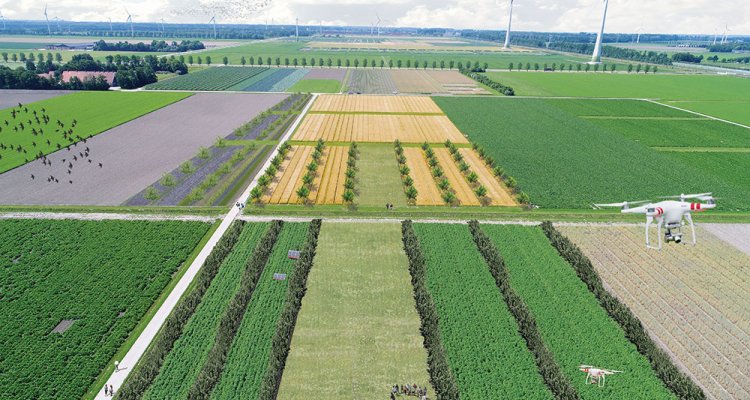
News
Plant calls the shots in pixel agriculture
An undulating field of golden wheat, almost luminescent under the setting sun. Within hours, the same field has become a barren wasteland. All of the grain has been harvested, including the twenty per cent that was not yet ripe. With pixel agriculture, this will soon be a thing of the past.
To get an idea of pixel agriculture, imagine a gigantic chessboard with squares measuring fifty by fifty centimetres. On one square there is cabbage, on the next carrots, while other squares have wheat or onion growing on them. This setup allows you to harvest what is ripe and leave what is not. The total yield of the field is greater than with traditional monoculture, where the entire crop is harvested in a single go. This increase in yield could be as high as 25 per cent.
Harvesting robots
Much like a vegetable garden, where you only pick what is ripe. ‘We certainly do not want to go back in time’, says Dirk van Apeldoorn, Crop Diversity researcher at Wageningen University & Research. ‘The development of harvesting robots specifically designed for pixel agriculture ensures that the labour costs remain the same. The technology is not entirely ready, but we are already gathering data using a testing field, for when that time comes.’
Mixed agriculture
Pixel cultivation is a type of mixed agriculture—much the same as strip-tilling. Strip-tilling is already a viable alternative for farmers. This method of cultivation means growing different crops on the same field in strips of six to as much as twenty-four metres wide. Both these forms of mixed agriculture offer ecological benefits, in addition to higher yields. They cause an increase in the number of insects and show improved soil life in comparison to fields that are planted with a single crop. This leads to an increase in biodiversity. Moreover, if one strip or pixel is being harvested, the insects can seek shelter in the adjacent strip or plot.
Van Apeldoorn hopes that the introduction of mixed farming methods will place ecology at the centre of agriculture once again. ‘It could bridge the gap between nature and agriculture, which is exactly what we strive for’, he states.
Opening of the academic year
This equilibrium between nature and agriculture is the key topic of next week Monday’s opening of the academic year of Wageningen University & Research. The opening will take place online from 15:30 hr on 31 August.
Read more